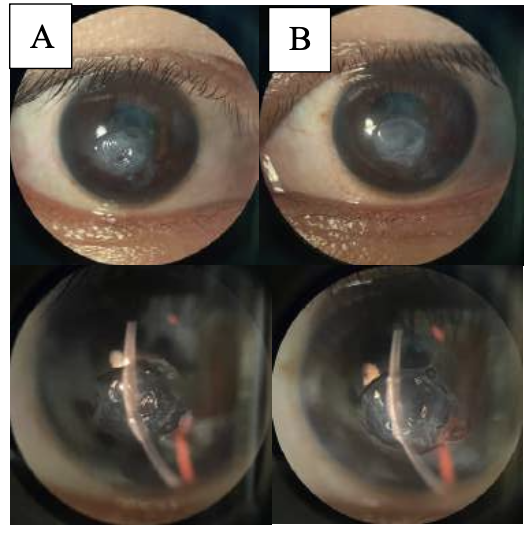A Rare Case of Congenital Corneal Keloids Poster Presentation - Case Report - Resident
Abstract
Introduction : A corneal keloid is a uncommon ophthalmic condition that manifest as proliferation of fibrous tissue in the cornea and presents as an enlarging, white, elevated, well circumscribed corneal lesion. It is a relatively uncommon lesion that typically appears after surgery, injury, or corneal perforation. Pathological examination of the resected specimen leading to a diagnosis of corneal keloid.
Case Illustration : A 6-year-old girl came with chief complaint was blurry vision in both eyes accompanied with a white opacity in her left eye that was gradually growing. The patient has been diagnosed with congenital glaucoma ever since birth. Nobody of her parents acknowledged having a history of inflammatory, infection, or ocular damage. At first glance, her visual acuity appeared to be light reflex in both eyes. Slit lamp biomicroscopy revealed a pearly white, enhanced opacity with sharp edges and smooth surface in the left eye (figure 1). New vessels were present in the lesion adjacent to the limbus. The patient is undergoing keloids excision, multilayer amnion membrane transplant and fine needle diathermy (figure2).
Discussion : Corneal keloid can present at any age, present as a glistening white enlarging mass on the cornea and well demarcated from the adjacent normal tissue. Histopathologic examination demonstrates a thickened corneal epithelium overlying stroma and hyalinized collagen (figure 3).
Conclusion : A corneal keloid should be suspected in cases of enlarging white glistening avascular corneal scars. Biopsy and histopathology confirmed the diagnosis.
Full text article
References
(-)
Authors

This work is licensed under a Creative Commons Attribution-NonCommercial-ShareAlike 4.0 International License.


